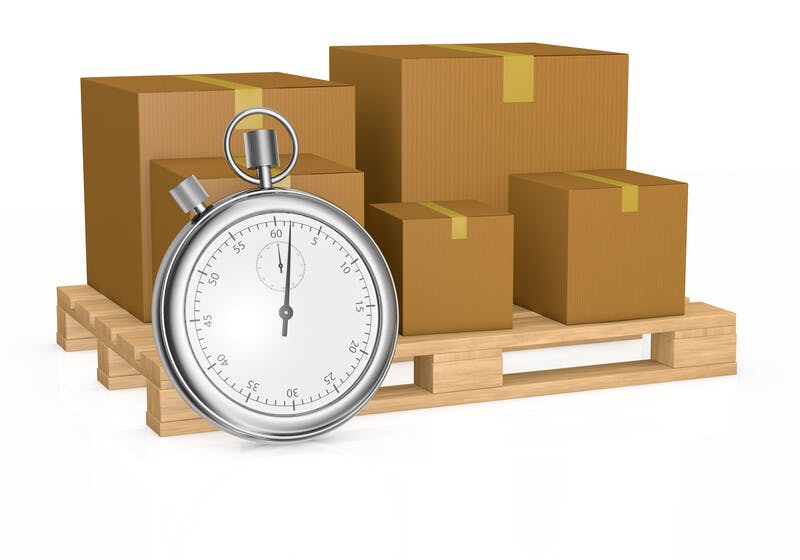The commerce landscape has changed dramatically since the e-commerce boom of 2020, leading to a new omnichannel environment. Consumers now have more options than ever before when it comes to how and where they shop. E-commerce channels allow them to deliver straight to their doorstep, in-store pickup, or secure pickup locations. However, this shift has come with some environmental costs, as many consumers are becoming increasingly concerned about the impact of their shopping habits.
According to a recent survey, 40% of consumers are concerned about the environmental impact of increased online shopping. Additionally, 66% believe it’s important for retailers to improve sustainability efforts. However, while consumers want to make more sustainable choices, they are often unsure how their shopping habits impact the environment. For example, 29% are uncertain about the environmental impact of online vs. in-store shopping.
Ultimately, the impacts of increased e-commerce spending are clear. The World Economic Forum predicts 36% more delivery vehicles will be in inner cities by 2030. Similarly, Accenture predicts a 32% increase in carbon emissions from urban delivery vehicles by 2030.
Reducing Final Mile Emissions
So, how can retailers reduce the environmental impact of e-commerce fulfillment? The starting point is in the final mile. Generally speaking, decreasing time in transit (TNT) in the final mile will reduce the carbon emissions of each shipment.
The most effective way to decrease TNT on final mile delivery is to distribute inventory across multiple fulfillment centers strategically located near large pockets of consumer demand. This not only reduces reliance on overnight air shipments (which emit 6x the carbon of ground shipments) but also means less time on a final mile delivery vehicle. In fact, UPS-owned Ware2Go observed a 34% decrease in carbon emissions when merchants distributed inventory across three warehouses as opposed to fulfilling from one warehouse alone.
For example, Palouse Brand, a fifth-generation family farm located in Washington State, was fulfilling all of their orders from a single warehouse on the West Coast. By distributing their inventory among 5 warehouses across the country, they were able to reach 98% of their customers with 2-day ground shipping, which reduced their carbon emissions by 40%.
Going the Extra Mile

However, reducing TNT is only the first step to reducing impact. Ultimately, the final mile will result in some level of carbon footprint. Merchants who wish to truly deliver on sustainability commitments can offset emissions by purchasing carbon offsets through a reputable partner. A reputable carbon offset program supports a diverse portfolio of forest projects that draw a comparable amount of CO2 back into the atmosphere, therefore neutralizing the carbon output.
While carbon offsets can be an effective tool for mitigating the effects of climate change, the industry is rapidly-evolving, and many have well-founded concerns around their legitimacy. When evaluating carbon offset programs, it’s important to look at the methods used for quantifying emissions and measuring the projects’ effectiveness in carbon drawdown.
New companies that use technology to monitor carbon offset projects can ensure much higher quality carbon credits. Companies like Pachama use remote sensing and artificial intelligence to measure carbon storage and monitor changes over time with much greater accuracy.
Guiding Consumers to More Sustainable Options
Consumers are looking for more sustainable shipping options. In fact, 60% of consumers are more likely to purchase from a brand with sustainable shipping, and 59% say programs like carbon offsets are important to their purchasing decisions. Additionally, 35% of consumers want to see retailers implement a distributed warehousing model to lower TNT. However, consumers will not know where to find sustainable shipping options if merchants do not advertise them. Unfortunately, 42% of consumers report that they rarely or never see retailers advertise sustainable shipping methods.
So, what can retailers do to lead consumers to more sustainable choices? The first step is to decrease TNT. The extra mile is to offset carbon emissions. And finally, to sway consumer purchasing decisions towards more sustainable options, merchants must advertise sustainable shipping at the top of the sales funnel. By taking these steps, retailers can not only reduce their environmental impact but also meet the growing demand from consumers for more sustainable options.
Creating a More Sustainable Path Forward
The rise of e-commerce comes with some environmental costs. However, retailers can take steps to reduce their impact and meet the growing demand from consumers for more sustainable options. By decreasing TNT, offsetting carbon emissions, and advertising sustainable shipping options, retailers can not only reduce their environmental footprint but also appeal to a growing market of environmentally conscious consumers.
About Ware2Go
Ware2Go, a UPS company, simplifies the supply chain for merchants of all sizes. The company’s integrated technology platform connects any sales channel to a flexible, nationwide warehouse network and an ecosystem of partners to enable affordable 2-day delivery with UPS’ trademark shipping reliability. Using machine learning and data science, Ware2Go helps merchants gain operational efficiency, grow margins and meet sustainability goals with more precise demand forecasting, inventory orchestration and business planning.


